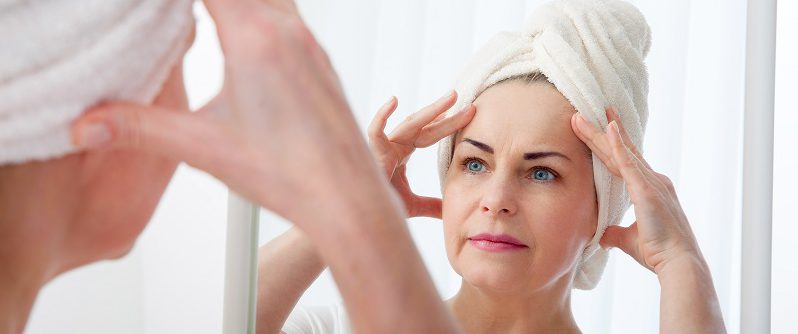With age comes wisdom—and skin that changes in texture and appearance. Learn how to identify common age-related skin problems and what you can do to alleviate them.
You may already have noticed your skin taking on some unfamiliar qualities. Perhaps it seems less dense than it used to be or feels a bit rougher. Maybe you’re spotting more, longer-lasting bruises on your arms and legs. Those changes are natural, but there’s plenty you can do to slow the process. While practicing prevention, you can also take action against existing age-related skin conditions.
Start with problems of texture, such as dryness and itchiness. Adding moisture to the skin is your goal. Take short, lukewarm showers—no more than 10 minutes, according to the American Academy of Dermatology—and use a mild, moisturizing soap. Brief cleansing replenishes moisture in the skin, and applying a moisturizer after bathing ensures the water doesn’t escape. Run a humidifier to combat dry air in the home.
Several other problems are more commonly seen than felt. Use this guide to help determine what they are and how to handle them:
- Brown marks on the top of the foot—This could be age spots caused by sun exposure; you might also have on your forearm or cheek. Stay out of the sun to prevent more age spots from developing and speak with a dermatologist if the area changes in appearance or you want to get rid of spots.
- Mole or other patch of skin that’s oddly shaped, tender to the touch or has changed color since you looked at it last—Don’t take this imperfection lightly—it could be skin cancer. Have your physician or a Dermatologist evaluate the spot.
- Raised flap of skin in the armpit—This is likely a skin tag, a blemish that can also occur elsewhere on the body, such as the neck or chest. It’s nothing to worry about, but it may be a nuisance if it routinely catches on clothing; if so, you might wish to have it removed.
- Sore, inflamed area that may range in color from deep blue or purple to yellow—You probably have a bruise. Be careful about bumping into things and speak with your physician to see if something in your health profile or medicine cabinet makes you prone to bruising.
- Saggy, baggy or loose skin—This one’s obvious—you’re dealing with wrinkles. Skin loses its elasticity over time due to a combination of natural, environmental and behavioral causes. You shouldn’t expect to prevent or eliminate all wrinkles, but steps such as quitting smoking, moisturizing daily and wearing sunscreen regularly may help.
Sources:
